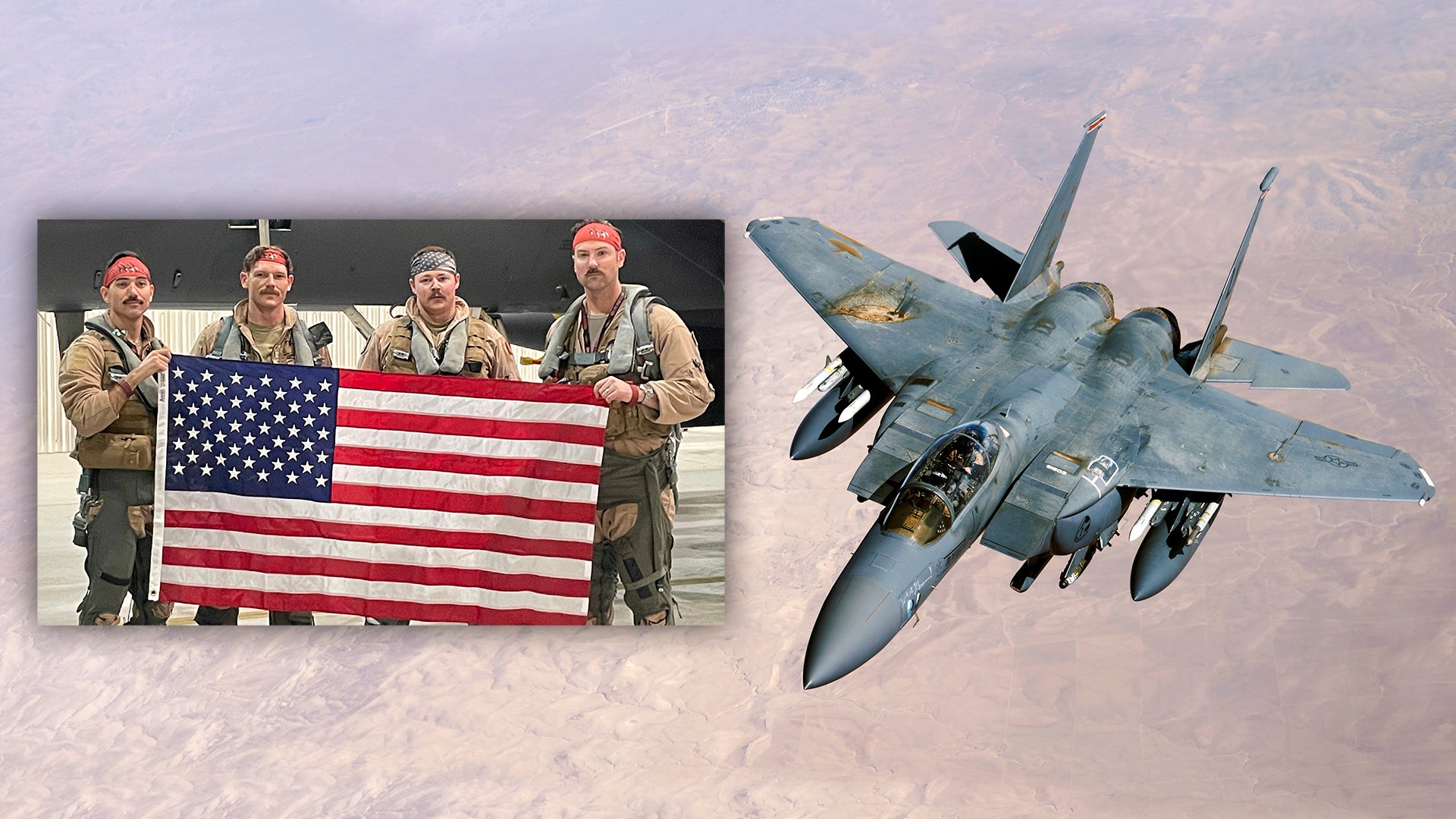In the dead of night, high over Kabul, with no diversion airfield available in the event of an emergency, U.S. Air Force F-15E Strike Eagles watched over the final American withdrawal from Afghanistan last August. Working independently, with what can only be described as chaos in the air and support just from eyes on the ground as thousands of people fled the clutches of the Taliban, it was a mission full of extreme risk with the highest of stakes.
“We ran a hectic 24/7 operations schedule to provide a two-ship of Strike Eagles over Hamid Karzai International Airport [HKIA] in the morning and another pair at night during the final days of the Afghanistan evacuation mission,” F-15E Weapons Systems Officer Capt. “Rage” told The War Zone in an exclusive interview. “Our Combat Air Patrols [CAPs] overhead were 3-4 hours-long, and with the long transit to Northern Afghanistan from our operating base in the United Arab Emirates, these were exhausting 10-hour flights.”
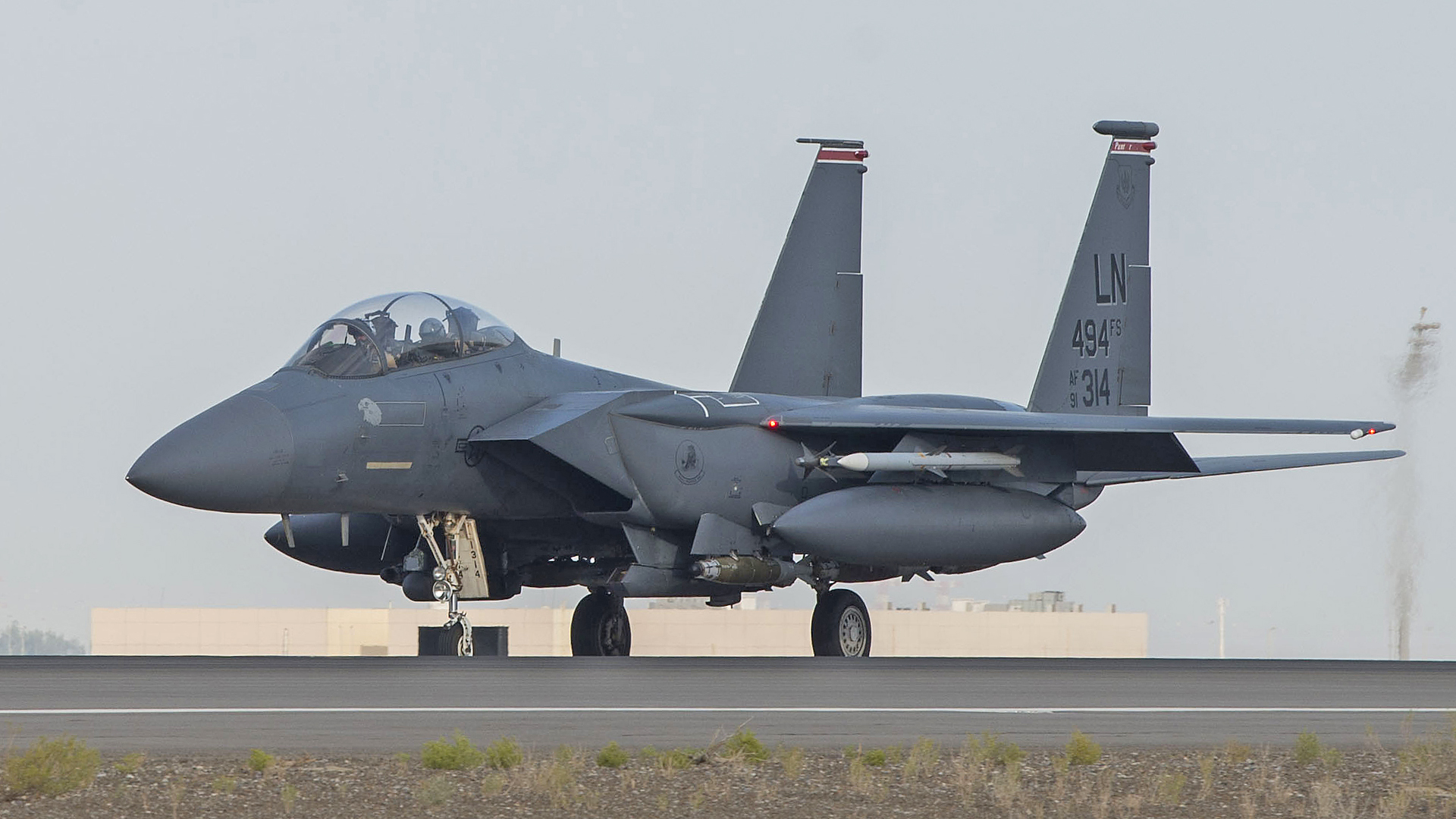
For the 494th Fighter Squadron (FS) “Black Panthers,” their missions to provide combat air support for the final U.S. withdrawal from Afghanistan, leading up to and on the historic final day of August 30, 2021, were unexpected, but the bread-and-butter for a squadron that is on a constant combat footing — “on the hook” to deploy at very short notice — with F-15E Strike Eagles that are versatile to tackle a range of roles, and making them the ideal assets to be drafted in.
“In October 2019, I became the 494th FS Director of Operations at RAF Lakenheath and that very day the squadron was notified of an IRF [Immediate Response Force] deployment to the Middle East,” says Lt. Col. Jonathan “Crash” Hutto, the current commander of the squadron, as he explains the pace of action at the U.K.-based 48th Fighter Wing. By January 2020, the squadron was flying missions from Prince Sultan Air Base in Saudi Arabia as part of a rapid upscaling of the Pentagon’s footprint in the country in response to the escalation in Iranian-linked militant activity directed against the Kingdom.
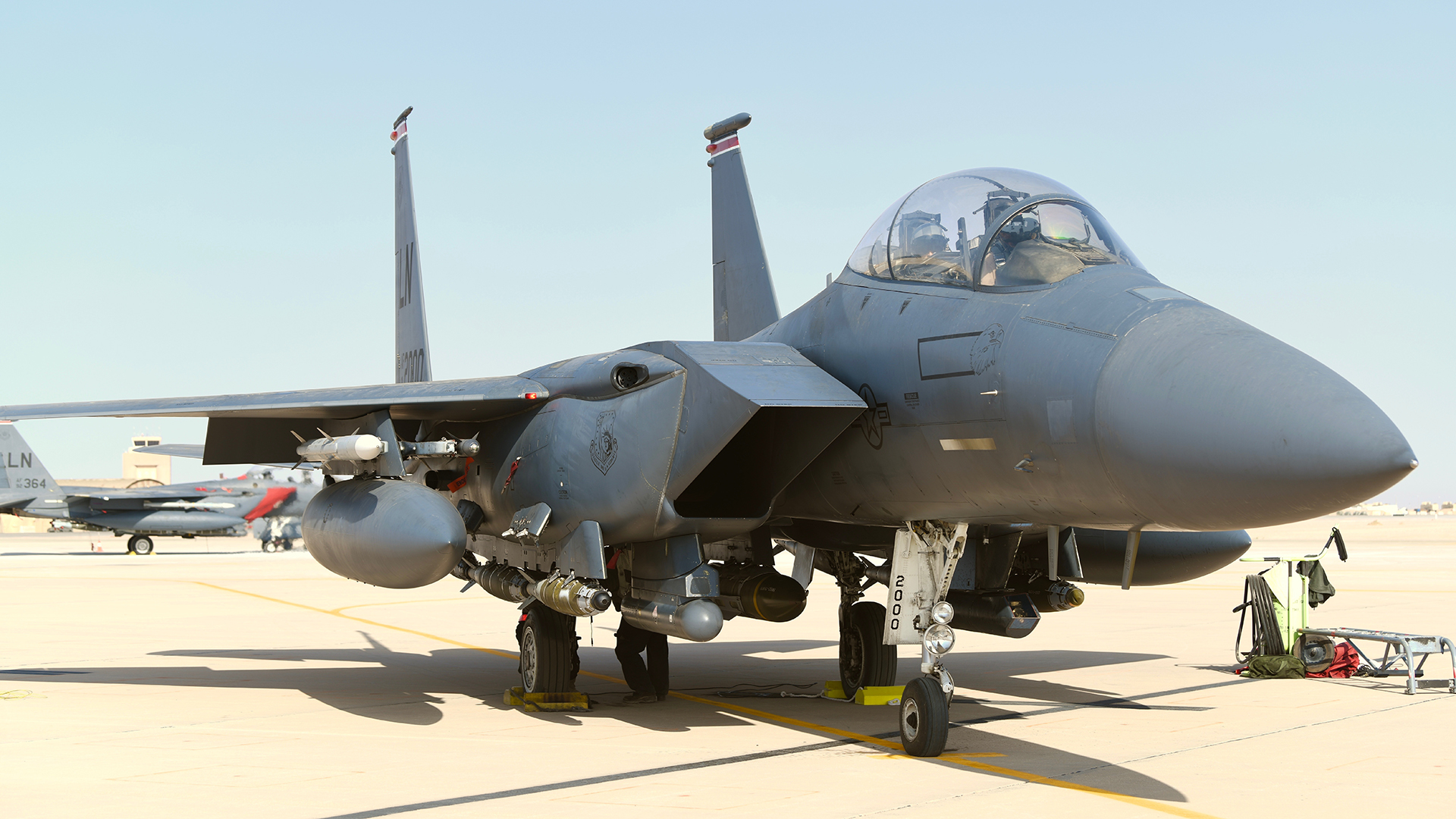
“We returned to Lakenheath in March 2020 just as our sister squadron, the ‘Bolars,’ went out the door on ops. The wing was briefly back together in late 2020, and I took over as the squadron commander in January 2021. Then we deployed for our scheduled Air Expeditionary Force [AEF] rotation in March 2021. If you come to Lakenheath you have to be ready to go — we are forward-deployed in a combatant command, so if you’re a mission qualified young wingman, you’d better be ready.”
Moving forward to support Afghanistan
Having embarked on its AEF rotation to an undisclosed location in the Middle East, widely acknowledged as Muwaffaq Salti Air Base in Jordan, the “Panthers” were soon notified that a further move was afoot, with six jets earmarked to move further east to Al Dhafra Air Base [ADAB] in the United Arab Emirates [UAE]. “We got told that CENTCOM wanted six F-15Es to go to ADAB to cover the Operation Resolute Support Afghanistan withdrawal mission, initially for 30 days,” says Rage.
The six jets from the 494th FS would be assigned to the 332nd Air Expeditionary Wing to contribute air power to help protect U.S. and coalition forces as they drew down operations and bases in Afghanistan. Due to a lack of available munitions at Al Dhafra, the “Panthers” ferried the six jets to the UAE on April 25, 2021, with a full load of weapons in the first-ever combat tactical ferry as part of this Agile Combat Employment (ACE) operation. The move was designed to sustain combat missions from their new base with an initial influx of supporting weaponry without relying on transport aircraft to move it. Clearly, this was advantageous considering the massive stress put on U.S. airlift capabilities at the time. “That large tactical ferry saw us bring 96 weapons to Al Dhafra,” commented “Rage.”

“They were closing down the operation at Bagram as part of the initial retrograde, with a lot of troops on the move and a lot of contacts with the Taliban, so there was a heightened state of tension. There was real concern that there would be attacks on the bases, so we were tasked with flying long-range, over-the-horizon missions from Al Dhafra deep into Afghanistan.”
At the request of the Combined Forces Air Component Commander (CFACC), the “Panthers” covered vulnerability periods in concert with KC-10s from Al Dhafra’s resident 908th Expeditionary Air Refueling Squadron, who dragged the fighters into Afghanistan and then remained on station with them as dedicated tanker support for the long-endurance missions.
During a visit to Kabul on July 25, Gen Frank McKenzie, Commander, U.S. Central Command detailed the U.S. military’s assistance to the Afghan Government and the Afghan National Defense and Security Forces (ANDSF) at that time. “The United States has increased airstrikes in the support of Afghan forces over the last several days, and we’re prepared to continue this heightened level of support in the coming weeks if the Taliban continue their attacks,” said McKenzie. “I reassured the government that we are continuing to provide airstrikes in defense of ANDSF forces under attack by the Taliban, contract logistics support both here in Kabul and over-the-horizon in the region, funding for them, intelligence sharing, and advising and assisting through security consultations at the strategic level.”
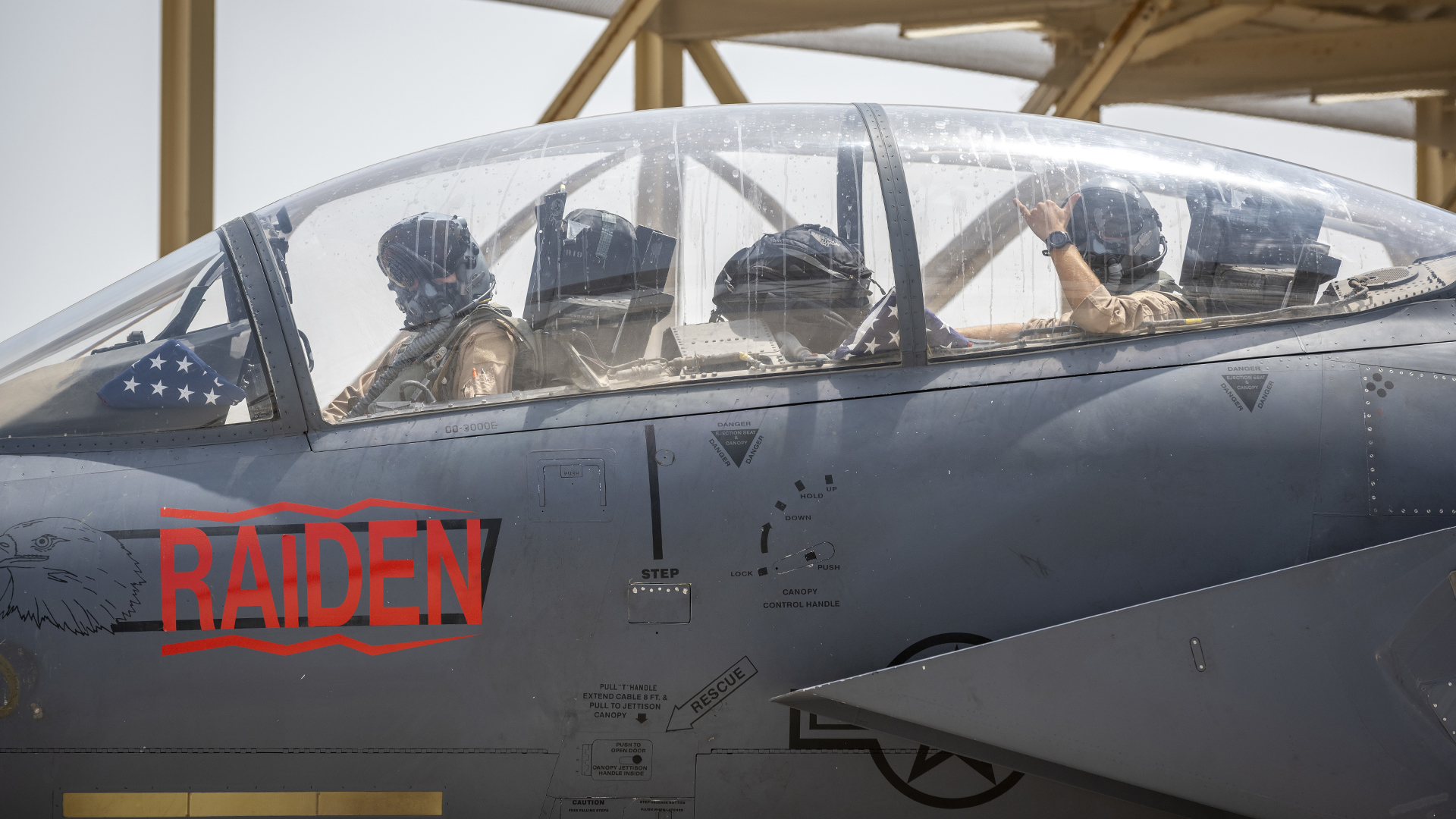
The “Panthers” spent 66 days supporting this CENTCOM Air Tasking Order in Afghanistan before tensions eased to a level where they could be allowed back to rejoin their main squadron deployment.
Back to Al Dhafra
Just five weeks later on August 15 at 4:00 PM, the “Panthers” were again notified that their presence was needed back at Al Dhafra. This time it was the big one — supporting the final withdrawal from Afghanistan and watching over the end of a 20-year campaign in this war-torn country as the last Americans left Kabul airport.
By 7:00 AM the next morning the first C-130 Hercules was airborne to ferry personnel to Al Dhafra, ready to “catch” the six Strike Eagles as they arrived. Less than 24 hours from receiving the call, the 494th FS had re-established forward operations in the UAE to help support the final chapter in the complex and controversial story of America’s war in Afghanistan.
“This time we did another ‘tac-ferry’ with weapons suitable for the Kabul NEO [Noncombatant Evacuation Operations],” explains “Rage”. “We had 500 lb GBU-38 and 54 Joint Direct Attack Munitions, GBU-39 Small Diameter Bombs, and LOCO [low collateral] bombs — a variant of the GBU-38 where the bomb body is designed for lower fragmentation, plus air-to-air missiles. We went back to Al Dhafra with guys who were the most experienced — those who knew how to fly missions into Afghanistan — and essentially picked up on the job we did just a few weeks prior.”
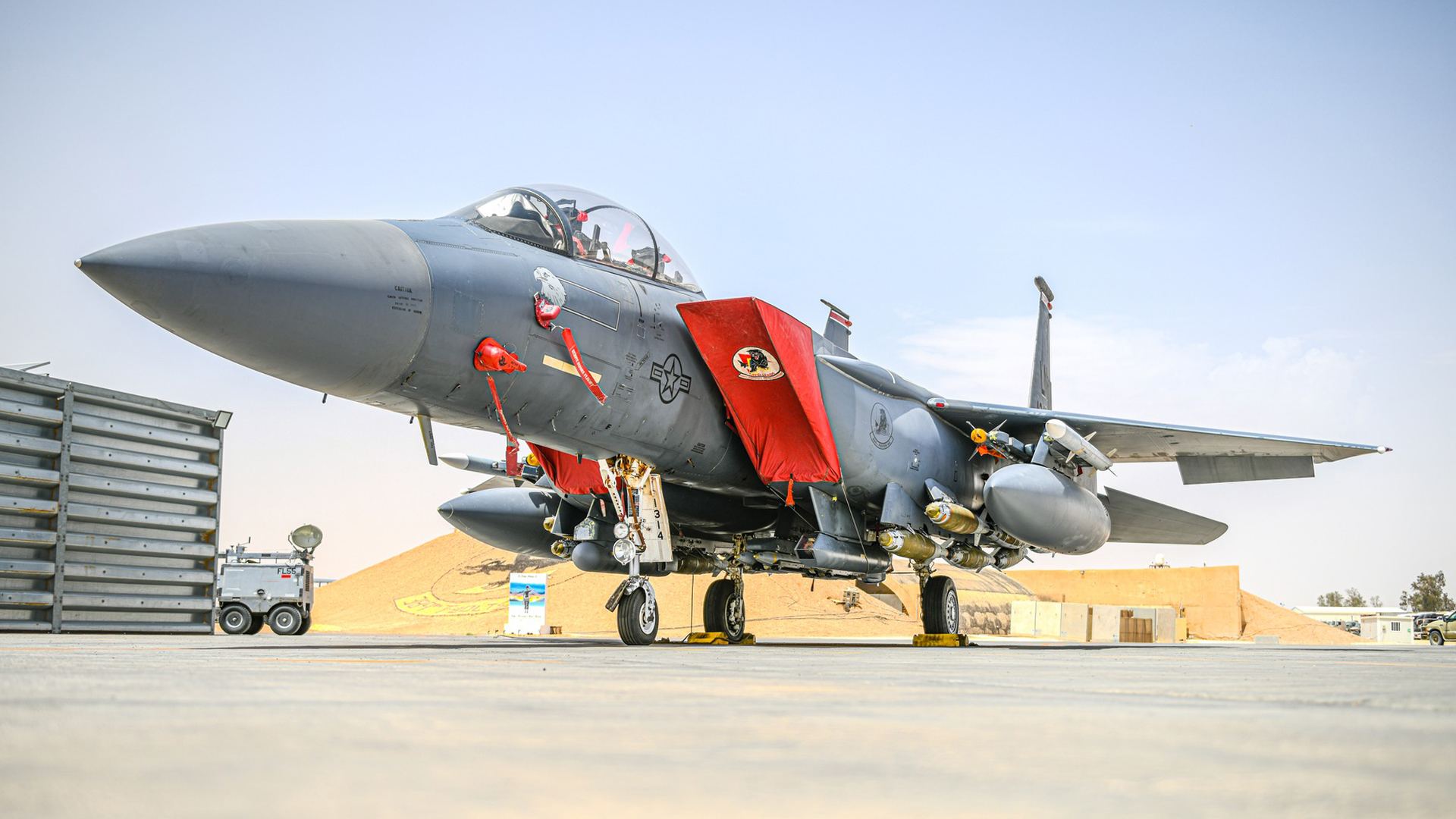
Again, the 494th FS was plunged into long 10-11-hour combat air support missions, flying 3-4-hour Combat Air Patrols over Afghanistan, but this time it was the capital Kabul, with the eyes of the world watching America’s, and the Taliban’s, every move.
“Most of the mission preparation and route planning was well versed in terms of where to go, the tanker support available, things like that, so having experienced aircrews really paid dividends,” explains Rage. “We would talk to the Ground Liaison Officer before we stepped [manned their aircraft] and essentially then show-up on task over Kabul and check in with the Joint Terminal Attack Controller [JTAC].”
Calling in the “Panthers” and other supporting air assets came as the hoped-for uneventful retrograde was overshadowed by the Taliban’s unexpectedly rapid re-taking of territory, pushing swiftly towards the capital city and its important air bridge at HKIA and potentially threatening the safety of American civilians, Afghan allies, and military personnel as they made a final exit from the country.
U.S. Navy aircraft from the aircraft carrier USS Ronald Reagan in the Northern Arabian Gulf, USAF F-16s from Prince Sultan Air Base in Saudi Arabia, along with B-52Hs, were swiftly called upon to contribute to a 24-hour overwatch of Kabul alongside the F-15Es of the “Panthers.”
“Having fighter aircraft overhead is something of a mental game. We could instill some fear and deterrence into the Taliban fighters,” said F-15E pilot “Spear,” who flew a number of these missions. Rage added: “On the first sortie we showed up overhead HKIA and the ground forces immediately told us they were going outside the airport’s south gate, with another 50 or so troops going outside the Abbey Gate. As they did so they called a threat of an inbound vehicle-borne improvised explosive device [VBIED] towards their location and they asked us to do an immediate show of force. We dipped down from 20,000 ft to 300 ft so we could be as loud and as fast as we could to try and deter that threat.” The event passed without incident.
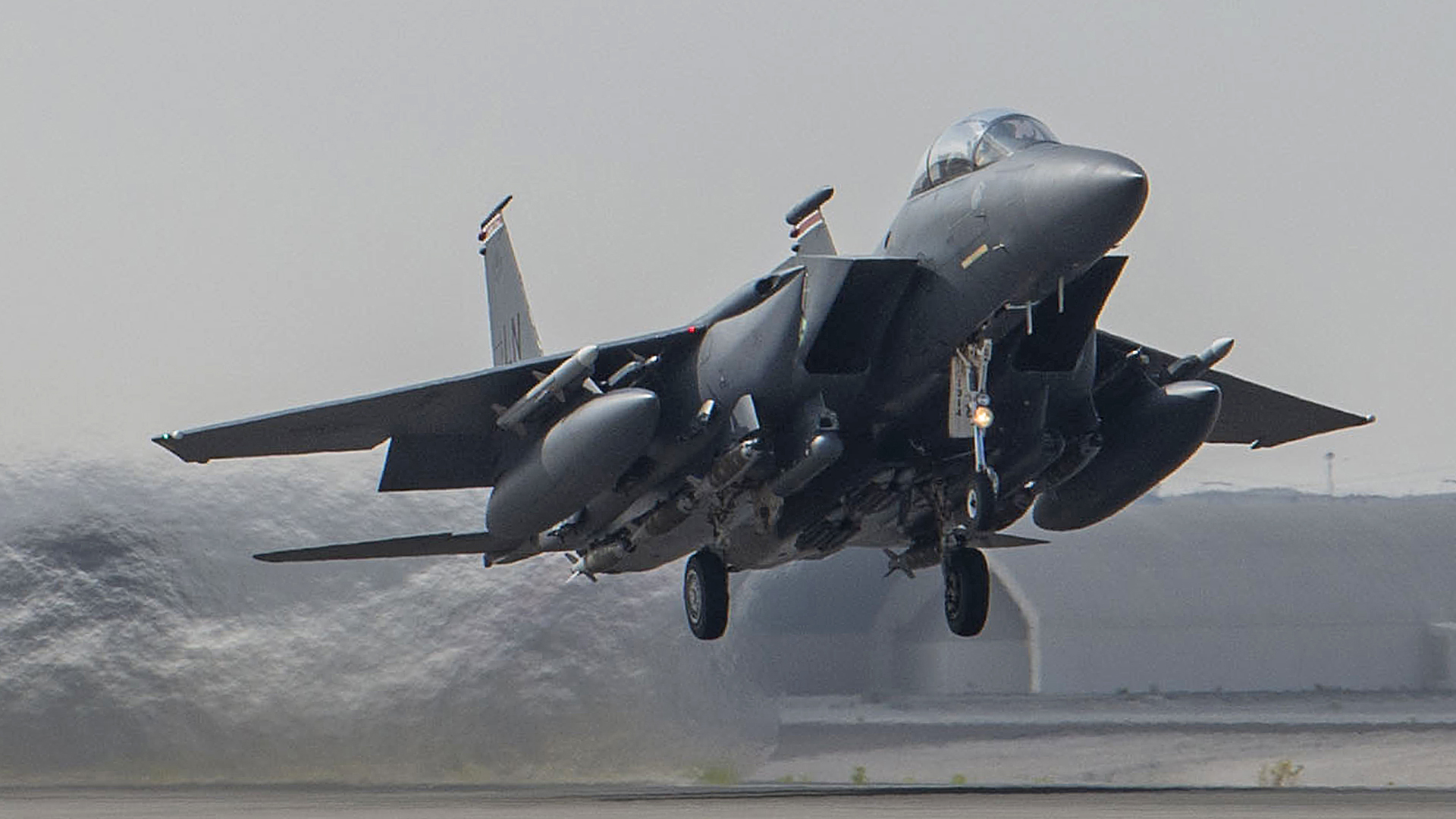
“Our first two sorties included show of force and show of presence low passes — 300 ft and 500 knots over Kabul airfield and nearby buildings to help deter any actors with VBIEDs that might come towards the base. My main task as a WSO was looking with the targeting pod along ridge lines around Hamid Karzai airport to see if anyone popped-up with any type of weapons or Man-Portable Air Defense Systems, or try to shoot a grenade at a C-17,” explained Rage.
“A lot of work monitoring the situation was accomplished by drones, but they are typically just looking with one sensor,” added Spear. “Having the big canopy of the F-15E and two pairs of eyes, means we can provide a bigger picture for situational awareness for the guys on the ground, reporting the trends and patterns of life that we are seeing. Some aircrews carried binoculars, and also with the Sniper targeting pod, we were monitoring known weapons systems in the city such as anti-aircraft artillery pieces, large guns, and some old tanks, some of which the Taliban had seized. It was a dynamic mission and we had to think on the fly.”
“Ultimately, we were there to provide deterrence, but if anything went haywire we could ultimately employ weapons,” says Rage. “Thank God we didn’t have to, because it was an extremely high collateral damage area with so many people gathered around the airport.”
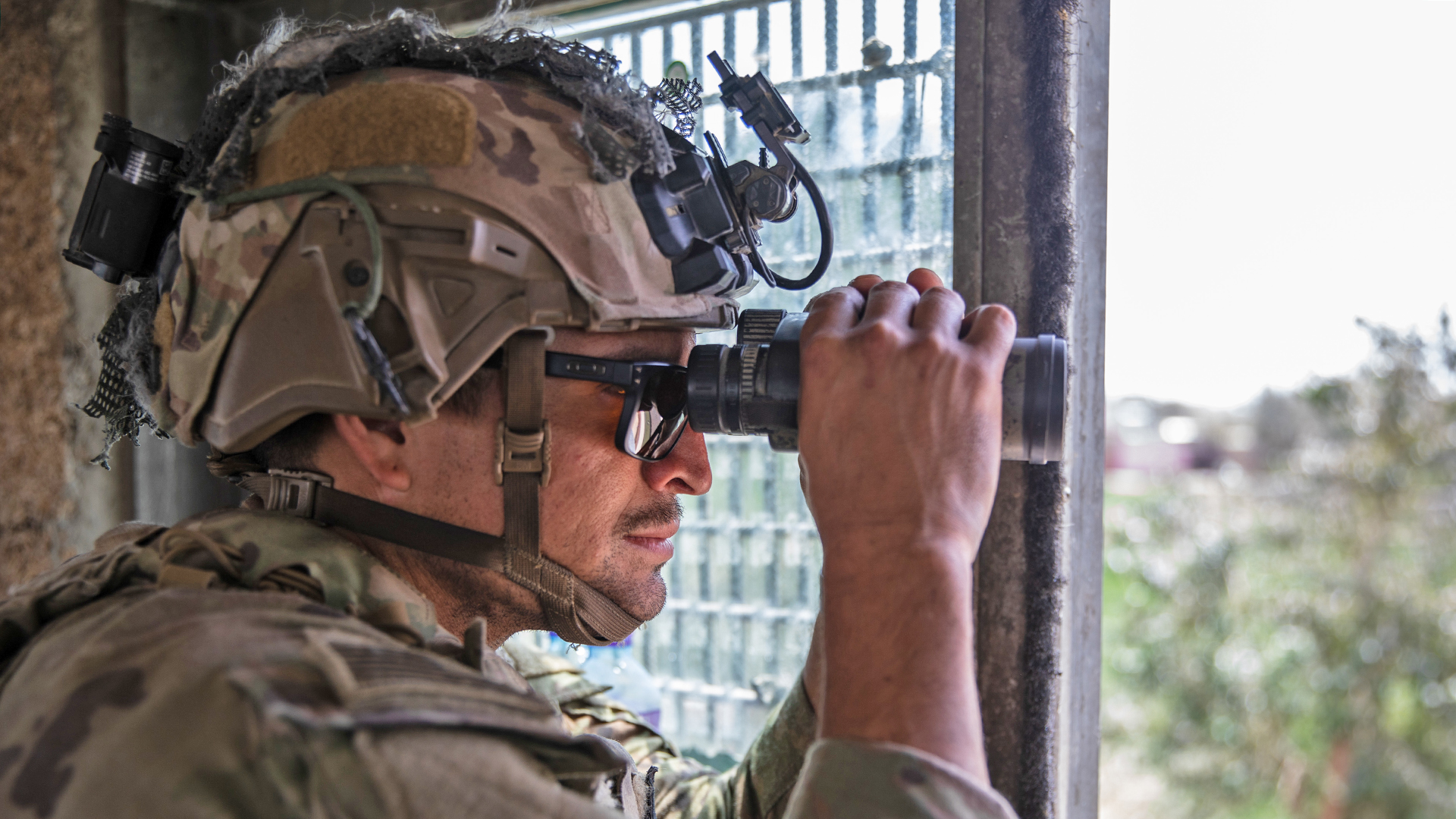
While the F-15Es were not overhead on August 26 when a lone suicide bomber killed 170 Afghans and 13 U.S military personnel outside the Abbey Gate, there’s little that air power could have done to prevent this horrendous incident. “Even if we’d been overhead in that attack with what happened there’s not much we could have done in such an extremely high collateral scenario with hundreds of thousands of people at the gates. We are looking to see if there’s something nefarious, but in reality you can’t really see everything that’s going on, you are still reliant on the guys on the ground,” explains Rage.
The final chapter
“It was a real wild west kind of control up there,” Rage explains. “We’d talk to the Combined Air Operations Center [CAOC] and they’d give us altitudes that other aircraft in the area were at, but there was no real air traffic control. The CAOC would give us updates of who’s in the stack over Kabul, but that wasn’t totally up to date, so we’d use our own radar and build our own situational awareness. But as far as control wise in the country, we’d clear our own flight path, maneuver the tankers around, change their track if we saw a contact, that kind of thing. Sometimes some airliners would just fly through the airspace — it was very dynamic.”
What the “Panthers” didn’t know when they initially moved to Al Dhafra, was that the CFACC specifically wanted Strike Eagles to be the last assets out of Afghanistan on the final night of the NEO on August 30. Both Rage and Spear flew in that historic mission to see the last C-17 transport aircraft out of Kabul, with the two Strike Eagles being assigned the radio callsigns of “Abide 07 and 08.”
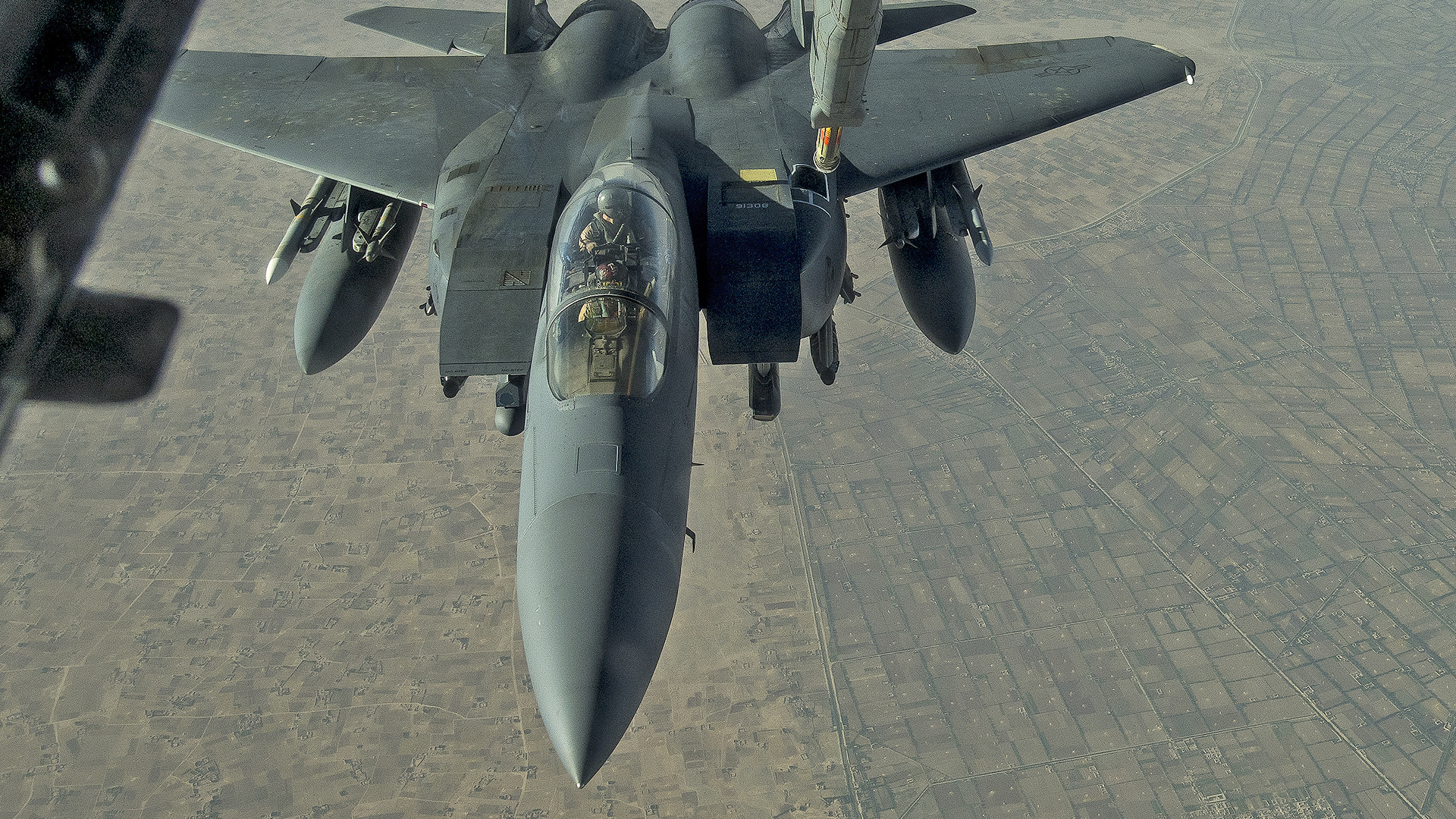
“I was the WSO in the lead jet for the final mission. As usual we carried two AIM-120 AMRAAMs and two AIM-9M Sidewinders, SDBs on the centerline, GBU-38s and 54s including the low collaterals as requested by the JTACs to minimize collateral damage concerns if we had to employ.” As a Weapons School graduate, Rage says the biggest thing for him was running the complex planning and coordination with the CAOC — he says “the pressure and stress on us was immense, and Weapons School helps you deal with that. The “patch wearer” is the person who gets the squadron ready to go, both tactically and briefing-wise.”
One of the biggest stresses for the aircrews overseeing the Kabul withdrawal was the lack of diversion options in the area in the event of an emergency. Indeed, once the final C-17s had left Kabul, the Strike Eagles were under strict instructions that even in the event of a critical emergency, they could not land anywhere in Afghanistan. “That was a big stresser,” explains Rage.
“If we had a serious emergency such as an engine fire or hydraulic failure before the C-17s left, we could have landed at HKIA and hung out with the “snake eaters” [special ops] guys and destroyed the jet, and we could have exited on the C-17s. Once the transports left we literally had nowhere to go if we had an issue. Afghanistan was out, and across the border in Pakistan was a total no-go, and clearly Iran wasn’t an option.”
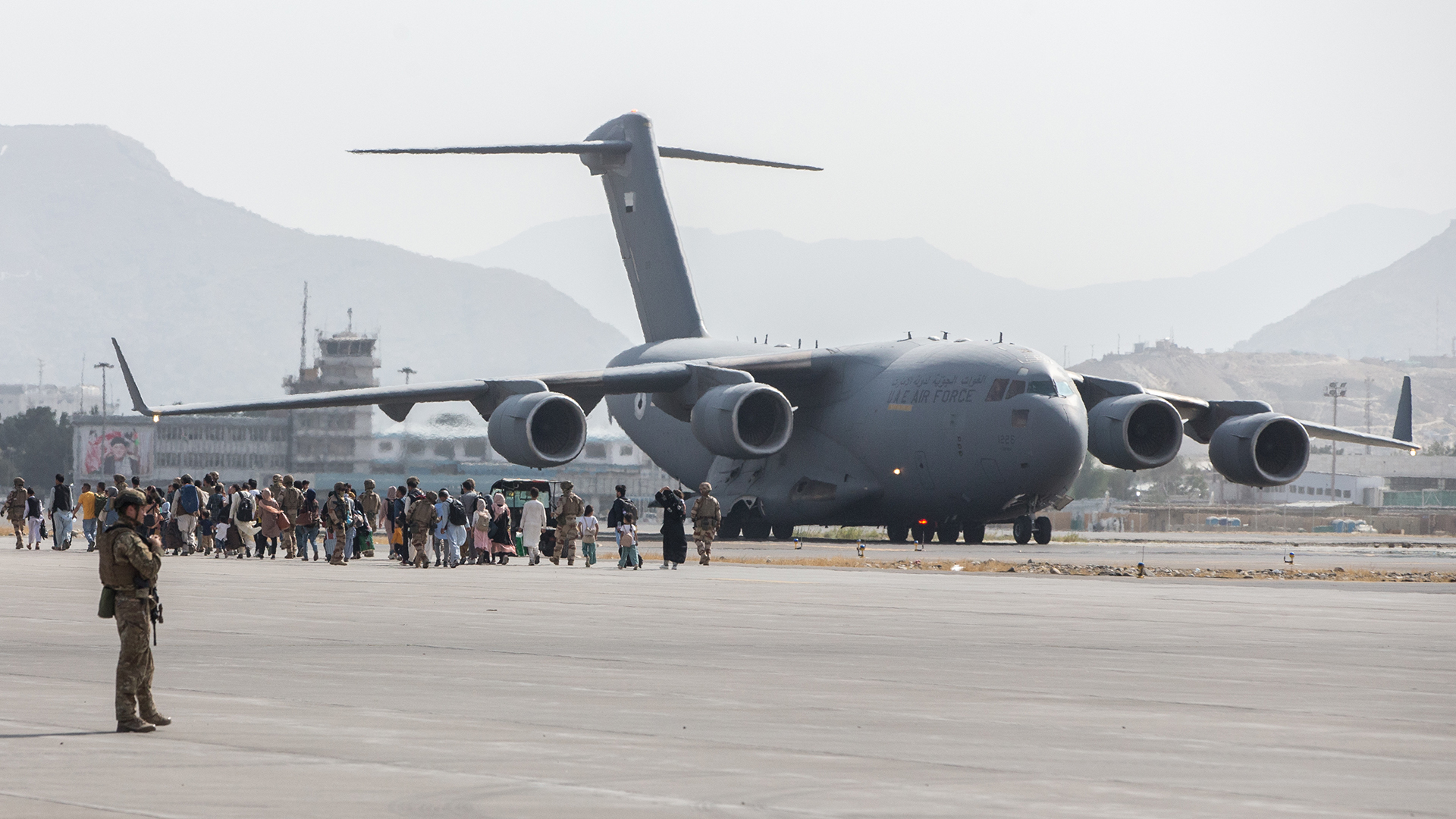
Spear takes up the story: “If we’d been in that situation, our game plan was to get as high and as far south and as close to the UAE as possible. There was a point on that night where we had literally no recovery options, so we’d have had to dump our bombs in the desert and get as high as we could, then look for a place to put the jet into the dirt if the situation was bad enough. Other options were to get as close as possible to the USS Ronald Reagan and bail out near the carrier. In fact we flew with all the carrier’s radio frequencies — there was an extreme risk of not being able to land anywhere!”
It didn’t help that with so many transport aircraft assigned to the Kabul withdrawal, the logistics chain got backed up, so the Strike Eagle maintainers had to work a host of maintenance issues to keep the jets serviceable.
Safely overhead HKIA, the aircrews of “Abide 07 and 08” watched as the stream of C-17s landed sequentially and loaded up for the last time. “It was relatively quiet down there but there were a few incidents such as civilians running onto the airfield,” recalls Rage. “They scrambled the special ops AH-6 Little Birds and threw out flash grenades to keep the civilians away from the runway as the C-17s rolled in. It was incredible to see the AH-6s pop smoke and fly low over the people, then land, they folded them up and threw them in the back of a C-17. That was true American air power right there: F-15Es and B-52s overhead, C-17s rolling in, and all the SOF guys.”
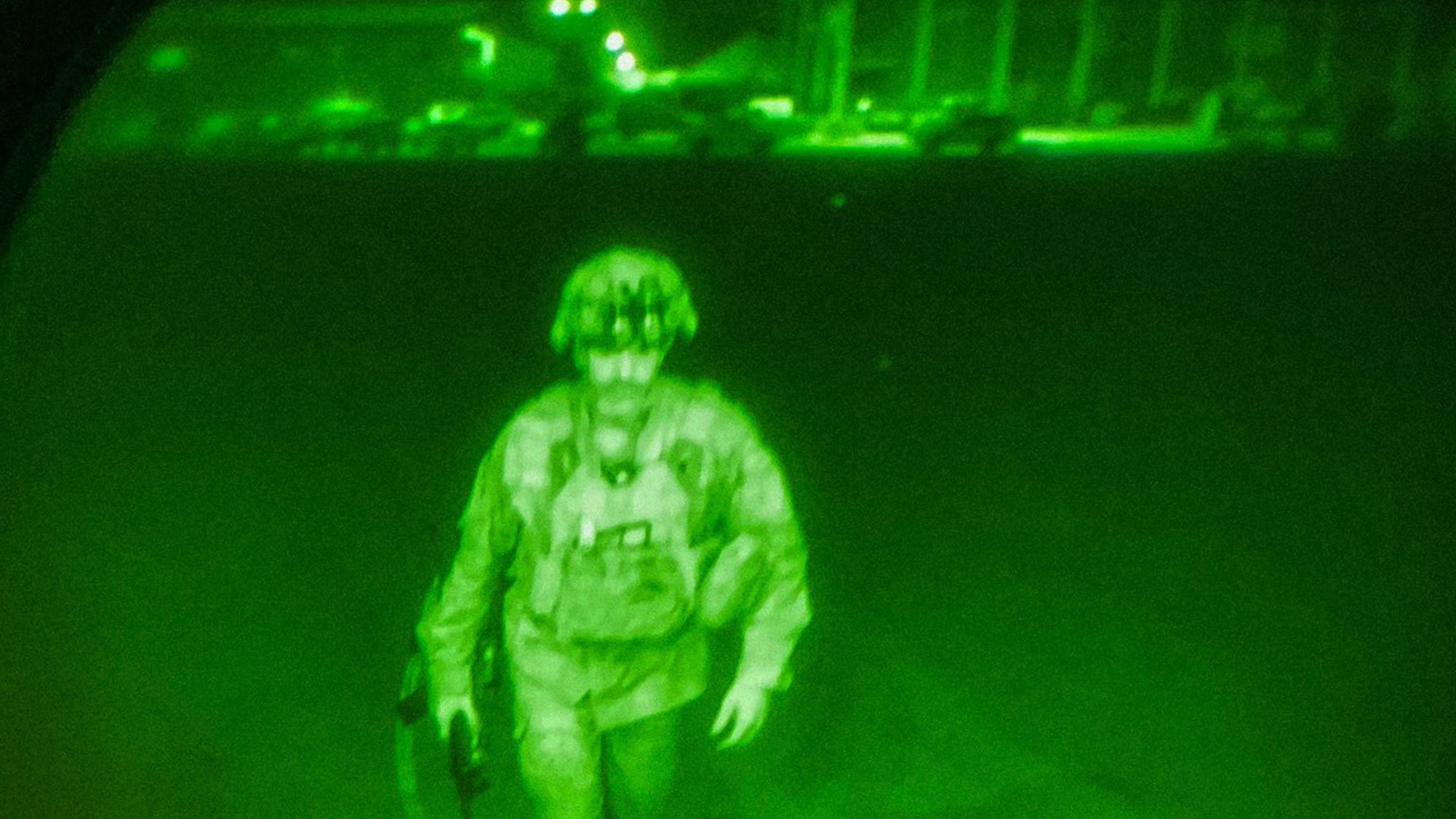
“The C-17s had a timeline to get back out, and there was a short delay, but they all stayed pretty much on time. We watched them take off, and then tracked them on the data link. The last JTAC on the ground came on the radio and said “Abide 07 and 08 you are going to escort us out of Afghanistan.”
“We spun around to get some gas, then we cleared the tanker out to the south, as well as the E-3 AWACS, the Navy E-2D Hawkeye and the E-8 Joint STARS, all of whom were ahead of us and clearing out of the area,” recounts Spear. “Major General Donahue, the commander of the U.S. Army’s 82nd Airborne Division and the last American soldier to leave Afghanistan, came on radio and thanked us for our services in ending a 20-year war. We got some text messages in the jet saying “good job Abide flight,” and then we flew out south, and back to Al Dhafra, without incident. Soon we were back to our rooms, and that was it.”
That night the crews of the two “Panthers” Strike Eagles flew a nine-hour mission without major incident.
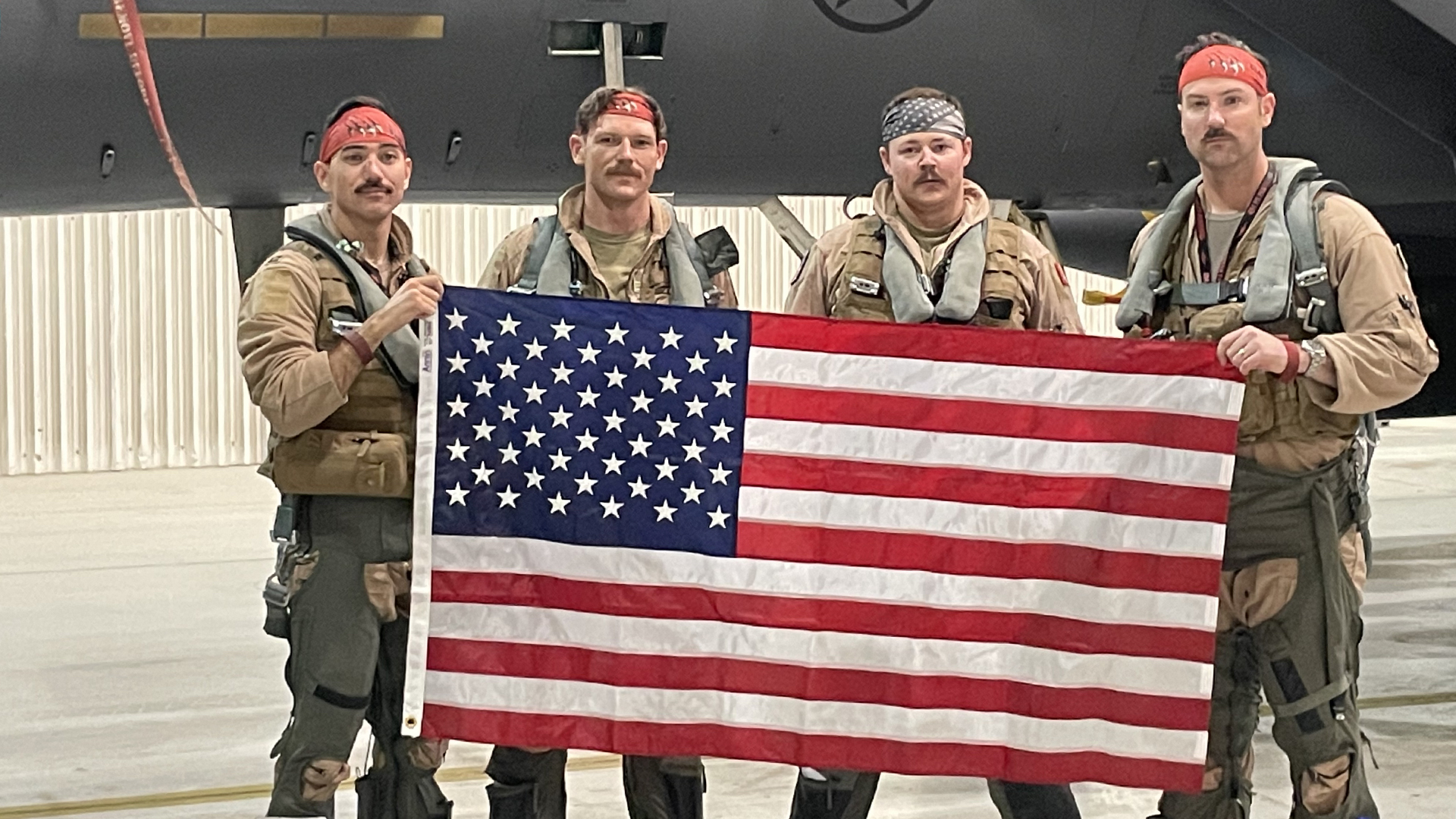
“Over the years, locations like Camp Dwyer and Camp Bastion became household names. Having the opportunity to be airborne and overhead to support the C-130s and C-17s as they exfilled the last people and equipment and closed those locations for the last time was extremely unique,” reflected “Panthers” F-15E pilot “Crow,” who’s actual name also cannot be provided due to operational security reasons. “Additionally, being part of the team to go back a second time to provide armed overwatch of HKIA in Kabul for the final days was exciting and humbling. We train hard to know what to do in combat when things happen very fast to best support our forces and allies on the ground. For me, getting the opportunity to lead formations flying sorties over 10 hours long to do exactly what we train to do, in a time when the stakes and pressure was the highest, was an honor to be a part of.”
Despite the horrors of the situation at Abbey Gate, and the countless stories of people desperately trying to get out of Afghanistan and away from the grip of the Taliban, the air bridge operation was a remarkable feat of air power.
In the background, the “Panthers” watched over their comrades on the ground, using all of their skills and technology to mitigate the very real exposure to risk. Despite all the confusion and dangers in and around Kabul, the transport aircraft got in and out safely, packed with people as they made a final exit from America’s longest war.
Contact the editor: Tyler@thedrive.com
